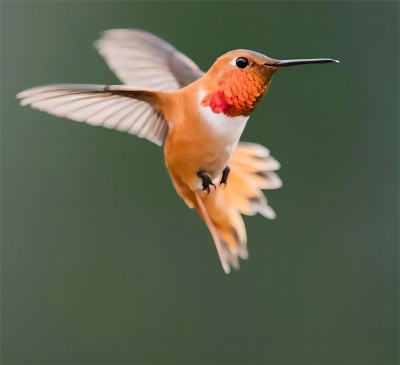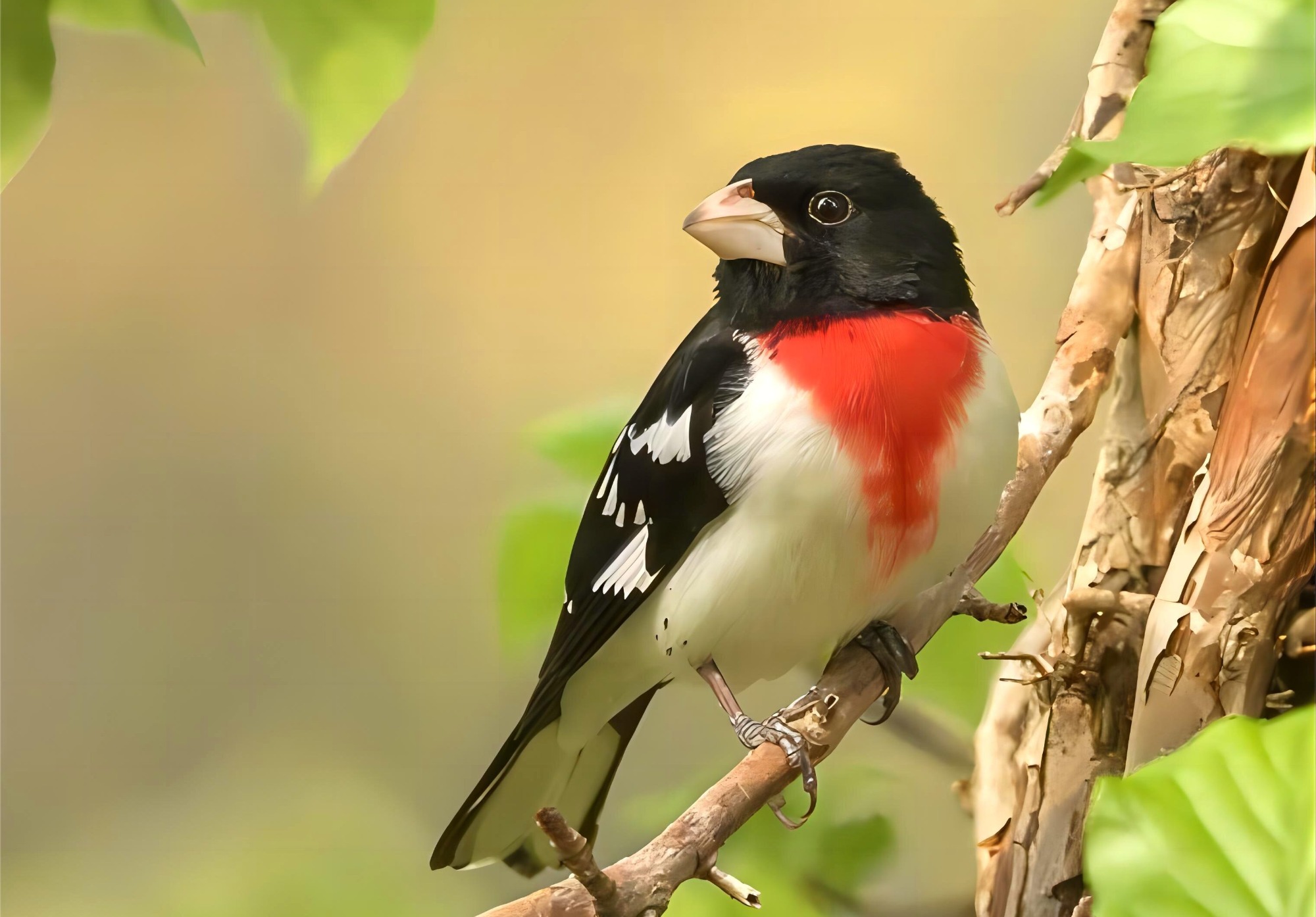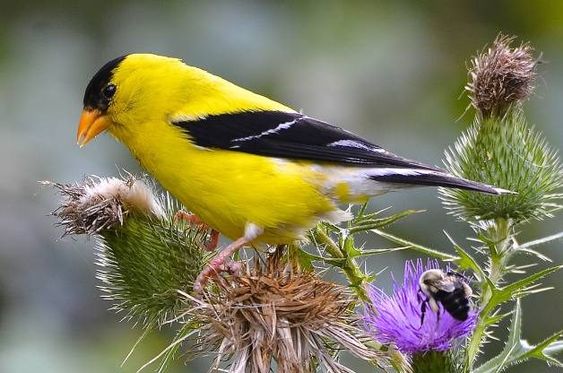How to attract birds to your wild bird feeder?
The best way to find out what your local birds like is to offer bird food that is not enclosed by a feeder-free foods! Backyard birds find food by sight, and if you offer foods on a tray or in the form of bird food cylinders, with nothing to come between the birds and the food, you make it especially easy for the birds to see and select their favorites. This is the simplest way to discover the best choices for your bird feeding station.

When you put food in a feeder of any type, the birds may not see it right away. In fact, my advice for helping birds find a new hopper or tube feeder is to place food on a tray next to the feeder. Feeder-free food is much more easily seen as the birds fly by.
Even though I call this “feeder-free food,”it is true that the tray method and the bird food cylinder method involve putting the food on something such as a tray or a cylinder holder. The point is that there is nothing to obstruct the birds' view of the food choices
Method 1:The food tray
Your first task is to buy or build a tray, which can be as simple as a two-foot by-six-inch board or aselaborate as a neatly mortised shelf divided into compartments. Birds are very comfortable feeding from a tray: they can easily see any other birds that might be aggressive, and they can quickly decide whether they want to stay or leave. And with atray feeder, you can spy every bird that visits your buffet.
You can mount the tray on a stand, place it on a deck railing, or hang it from a low tree branch. You will find that the money or time put into a durable, well-made tray pays off in the long run: a tray is one of the best possible feeders, and should be standard equipment at any feeding station.
Once your tray is in place, offer samples of the six most popular foods. You can generally find small bags of each at your bird food supply store,and a couple can probably be found in your local grocery store, too. The six sample helpings should include representatives of all the principal categories of food attractive to birds: seeds, nuts, fats,fruits, and nectar.
Sunflowers Black oil sunflower seeds, or sunflower without shells, called sunflower chips, kernels, or hearts.
Millet White proso millet.
Peanuts Unsalted, roasted, or blanched and broken into pieces.
Fats A suet blend cake or other fat, such assuet nuggets, Jim's Birdacious Bark Butter, orJim's Birdacious Bark Butter Bits. Rememberto break suet cakes into small chunks.
Fruit Raisins, orange halves, grape halves ,blueberries,cherry halves. A combination offruits is best, but always include orange halves.
Nectar In regions and seasons where hummingbirds arelikely to be present. Granted,it's diffcult to offer this food without a feeder.Use a simple hummingbird feeder with lots of red in the feeder parts but no red dye in thesugar solution, which is made of 4 parts waterto i part sugar.
If you offer equal amounts ofeach food, say a half of a cup each morning, you can compare what is left over at the end of the day and quickly determine how much the birds like each food. If it rains or snows, you will probably need to dry the tray and replace all of the food.
This selection has a good chance of bringing in any bird that likes to eat seeds, nuts, fats, fruit, or nectar.You will also attract many insect-eating birds, such as woodpeckers, which are also attracted to suet and peanuts. Keep notes on your visitors and the end-of-day amounts in the tray for at least three or four weeks. The information in that notebook will guide you for as long as you feed birds in this location.
Method 2: The bird food cylinder
The other feeder-free method to discover birds' preferences is much simpler, though the materials might be harder to find. The cylinder method is similar to the tray method, but it takes bird food in a different direction: vertical.
Circular cakes called “bird food cylinders” hold the seed together with a natural protein binder.Cylinders can contain seeds, suet, nuts, or various combinations of those ingredients. Cylinders are available in several sizes, but it is best to use the small cylinders, which are sometimes sold as Stackables.
Look for these bird food cylinders:
No-mess blend Most no-mess cylinders are made of sunflower chips, with a few nuts and fruit pieces such as raisins or cherries.
Suet Most suet in cylinder form will be adough that is suitable for feeding year-round and will not melt in summer heat.
Peanuts and tree nuts These cylinders include peanuts and a variety of tree nuts, such as walnuts, Brazil nuts, cashews, and pecans.To round out the offering during the summer, or irareas with warmer climates year-round, you will need:
Nectar Your solution should be mixed out of 4 parts water to 1 part sugar, with no red dye. This will require its own feeder, of course.
Fruit You can offer raisins, orange halves, grape halves, blueberries, or cherry halves on a tray or on top ofthe nectar feeder
Food cylinders are very visible to the birds, sothey can quickly find the foods they prefer. The cylinders make it even easier than a tray for youto see which foods have been eaten the most: the one that gets smaller fastest is the most popular food in your yard.

Keep a list of the birds and thefoods eaten
To identify the birds coming to your tray or cylinders, spend some time with Chapter 3, where you will find photos and information about 18z speciet that visit bird feeders. That chapter also points you to digital resources that can help with bird identifcation-sometimes a tricky matter if you're new to birdwatching.
During the three or four weeks that you are experimenting with the tray or cylinder method keep track of the birds and the foods they are eating. Especially make note of the foods that your favorite birds prefer. No matter which method you use, you now know the proper foods for the birds in your yard.
Some species are consistently among the first to check out a new source of food. Depending on where you live, chickadees, nuthatches, doves, or sparrows might be among the first to find your trayor cylinder.






 Introduction to Hummingbirds
Introduction to Hummingbirds
 Rose-breasted Grosbeak
Rose-breasted Grosbeak
 Comprehensive Overview of Spinus tristis (American Goldfinch)
Comprehensive Overview of Spinus tristis (American Goldfinch)